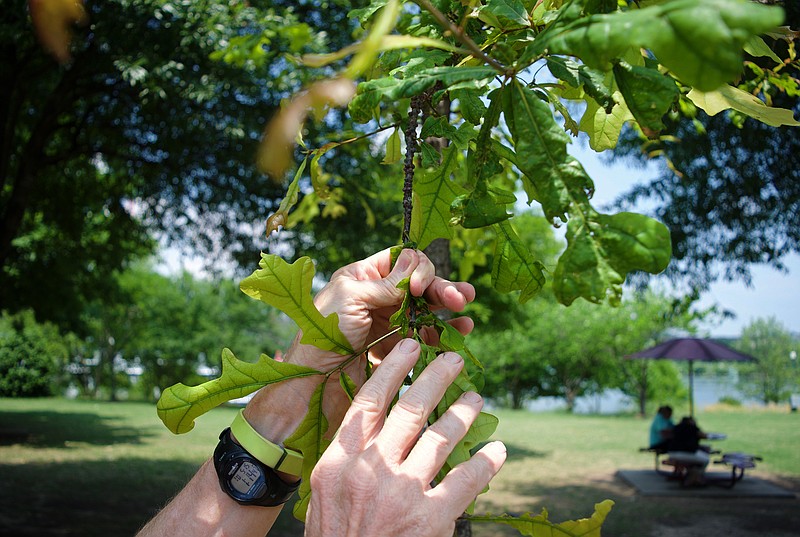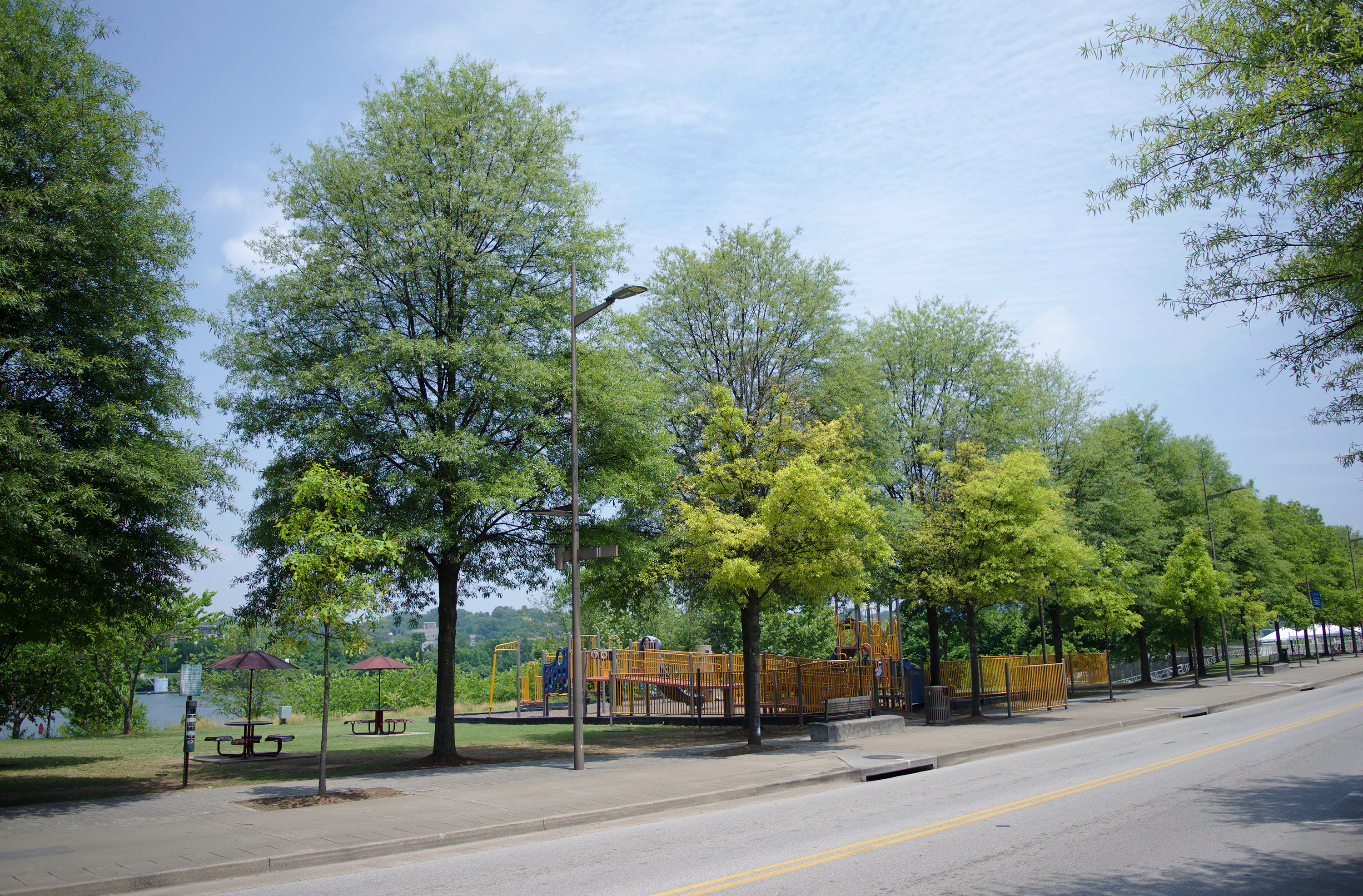More than 500 trees located in downtown Chattanooga are infested with a small insect and suffering from elevated pH levels that threaten the health and existence of the plants that line the hub of the city's downtown core.
Taxpayers may have to foot a sizable bill this year to treat the problem or watch as the trees wither and die, providing an eyesore in one of the region's most-trafficked areas and potentially more expense if the trees have to be replaced, officials said.
The infestation is suffocating willow oak trees on Broad Street, Market Street and Riverfront Parkway at Ross's Landing, depriving them of water and vital nutrients. The city will review bids to treat the trees this week and estimates the cost at about $300 per tree, or about $150,000 total. The area is home to the Tennessee Aquarium, part of the Tennessee Riverwalk and hosts events such as the Riverbend festival and this weekend's Ironman 70.3 race.
"It has built up to the point that it's a massive infestation," City Forester Gene Hyde said. " ... This is our living room, so to speak. We want it to look nice."
The trees lining Riverfront Parkway are almost entirely willow oaks and were planted at the same time. They all should look relatively the same. However, some of the trees are visibly changing. The leaves on the affected trees are more yellow than those of the green, healthy trees. They are also smaller, and if one looks closely, small bumps that act as protective shells for the damaging insects are visible.
Public Works officials are working with two separate but related problems, Hyde said. The pH levels in many of the trees are well above where they should be, meaning the trees have too much hydrogen.
Hyde believes the problem is being caused by runoff. The trees are planted in soil in the middle of and alongside sidewalks. Hyde said he knows the soil is perfect for the trees and isn't causing a problem (the soil used was studied extensively when being selected). That leads him to believe that rain runoff is sweeping dust from the limestone sidewalks into the tree pits. The dust, he believes, is raising the pH level of the trees, which weakens them. The weakened trees are then more susceptible to disease and insect infestation, which leads to the second problem: the infestation of lecanium scale - the small insects slowly killing the trees.
Hyde found the problem, and the city has praised him for his initiative that officials believe may have saved the city substantial money.
"Thanks to the discovery and quick action made by Gene Hyde, our City Forester, we hope to be able to contain the infestation and not have to endure the cost of replacing dozens to hundreds of trees," Justin Holland, Public Works Administrator, said in a statement. "We'll review bids once they are in and have confidence that whoever we choose will help eliminate the scale and restore the trees' health."
However, the work to combat the infestation is just beginning. Knoxville researchers with Tipco Inc. and Airtech Tools came to Chattanooga recently to provide free consultation to study the trees and find solutions. The research will help the city select the correct treatment option.
Hyde believes they will have to use chemicals this year to immediately control the problem. However, he hopes that they can then use native insects, such as lady bugs, to more naturally and cost-effectively control the problem.
Contact staff writer Mark Pace at mpace@timesfreepress.com or 423-757-6659. Follow him on Twitter @themarkpace and on Facebook @ChattanoogaOutdoors.


